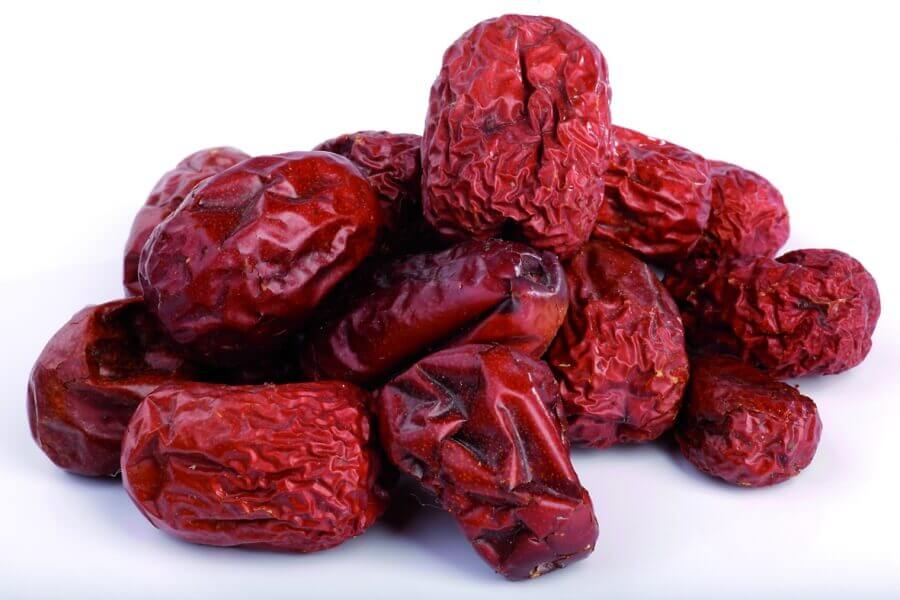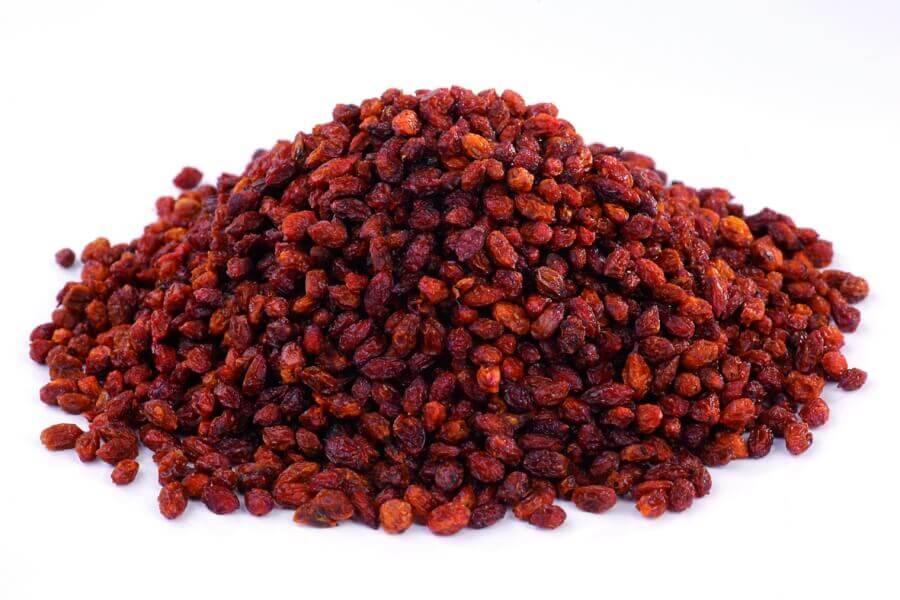| Quantity | Unit price | Base price |
|---|---|---|
| To 2 |
CHF 19.00*
|
CHF 7.60* / 100 Gramm |
| From 3 |
CHF 18.05*
|
CHF 7.22* / 100 Gramm |
Available, delivery time: 1-4 days
Product information "Jujube halves / red date berries organic"
Organic jujube halves from wild collection in premium quality
Update: No longer whole jujube with stone, but jujube halves without stone. Despite careful processing, stones may still be present.
Jujubes belong to the botanical family of buckthorn plants and have been cultivated in China for over 4000 years. There are at least 400 varieties of jujube. Although they are sometimes referred to as red dates, Chinese dates or Indian dates, they are not related to dates and grow on relatively small trees, Ziziphus jujube, which thrive in extreme temperatures.
Jujubes are brown-red on the outside and beige on the inside, with a crispy, edible skin and a sweet flavour like a mixture of dried apples, pears and dates with a marshmallow texture.
Why consume Jujubes?
Jujubes contain a wide range of different nutrients, including 18 of the most important amino acids and magnesium, potassium, copper, niacin, calcium, manganese, phosphorus and iron. They contain high amounts of vitamin C, which strengthens the immune system and fights infections. This is possibly the reason why they have been used for thousands of years in many cultures as a tea for sore throats, for example.
Test the effect of a jujube tea if you have a cough or sore throat. You can find the recipe in the Recipes tab.
The flavonoid apigenin (also found in camomile, thyme and red wine) contains antioxidants and can have a positive effect on the liver, digestion and allergies. It is also said to be anti-inflammatory.
What makes our wild organic jujubes special?
Our red dates come from certified organic wild collections in Uzbekistan. They thrive in unspoilt, remote areas near Samarkand, along the ancient Silk Road. Here, the flavour and special ingredients develop well during the warm and long summers. Silk Road Organic Foods harvests carefully in Uzbekistan using gentle solar drying and subsequent hand sorting.
Jujube is a super delicious fruit with a unique texture that is extremely rare to find. It is not too sweet and is an ideal healthy snack.
How to use jujubes?
We recommend these interesting jujube berries, which are a little less sweet than other dried fruits, as a snack between meals.
Dried jujubes can be used instead of dates or apples in recipes. Jujubes can also be used as a tea (see tab Recipes).
Recommendation: Soak the jujube in water for 2 hours. This makes them softer and slightly sweeter.
Nutritional values of organic jujube per 100g
Energy value 1157kJ/276kcal
Fat 0.8g
of which saturated fatty acids 0.2g
Carbohydrates 61.8 g
of which sugar 61.8 g
Protein 3.6 g
Dietary fibre 10.8g
Salt 0.02g
Vitamin C 119mg (200%*)
All information is subject to the usual fluctuations for natural products.
*Per cent of the recommended daily intake for an adult according to the LGV.
Storage: Store in a cool, dry and dark place.
Login






